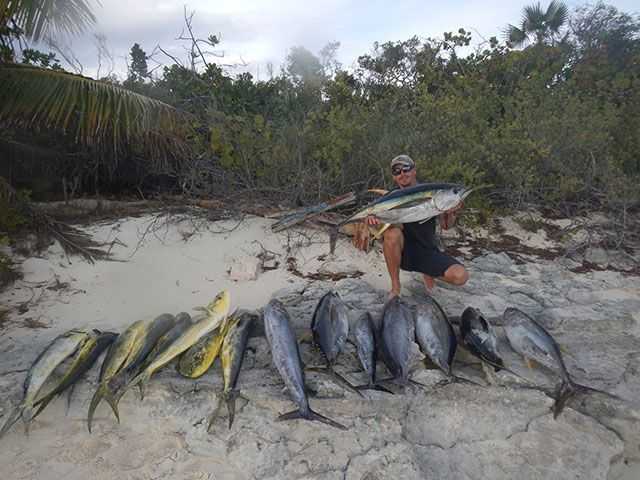
[dropcap]A[/dropcap]pril is finally here. It has been a slow start for yellowfin tuna this year but we are hoping to see them migrate past Long island in large amounts. April is typically when the tuna birds start showing up plentifully and it makes finding the tuna much easier. Any technique you employ to catch the tuna in April can still be a challenge with wahoo still in the area. A lot of times when we are live bait fishing or chunking, the wahoo will cut you off on the 60-pound fluorocarbon leaders we use.
One way we try to avoid loosing the wahoo, yet at the same time still catch the leader shy tuna, is to make 2-3 foot long 40-50 pound test titanium leaders with a 130-pound SPRO swivel crimped on one end and a 7/0-8/0 size short shank live bait hook crimped to the other end. Then bridle rig to a goggleye or blue runner and drop them 50-80 feet down with weights or downriggers while you drift. At the same time you’re fishing the fluorocarbon leaders on the surface with chunks or live pilchards and catching the tuna. Surprisingly we even catch the yellowfin on the wire from time to time.
This time of year it is best to gear up for it all. We typically rig 12 rods for the day: four trolling rods, four live bait/chunking rods and four heavy duty spinners for casting to mahi mahi. The spots we fish on Long Island are specific areas that fish congregate around and if we plan to chunk or live bait that spot, we first troll up and down to get the wahoo out of the way. A lot of people simply troll for yellowfin, which is a technique least preferred, yet is productive. Typically however many yellowfin you can catch trolling, you can catch four times as much by live bait fishing or chunking. Although, trolling does have its advantages if you are in an area where you see birds and fish yet are not sure if they are yellowfin or blackfin. We would then troll through the school with small ballyhoo rigged with a single 7/0-8/0 size Mustad 7691 stainless steel hook on 130-pound fluorocarbon and a smoker choker lure in front. Once we hook into some fish, we can confirm whether they are yellowfin or blackfin and worth deploying a chunk line or live baiting, or simply move on to another flock of birds.
Tight lines and safe fishing.

